We continue to follow the western edge of the Cotswold escarpment, with expansive views over the River Severn and Forest of Dean. Another hill fort to visit, and a monument to the man who translated the Bible in to English
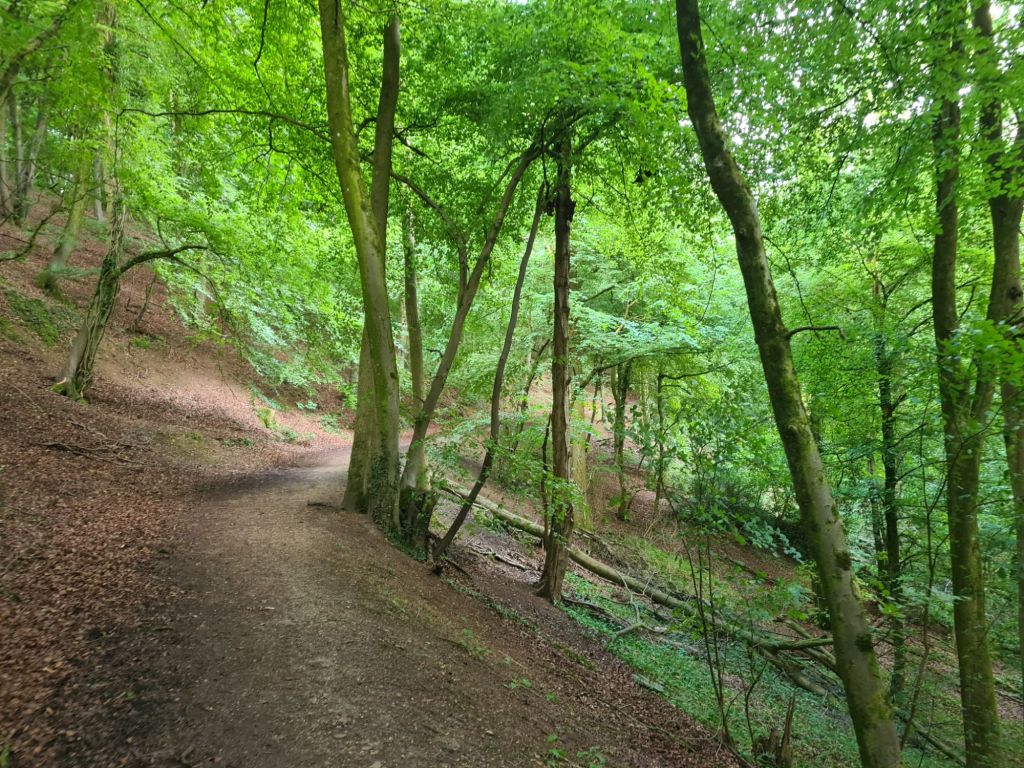
Day Eight: Dursley to Wotton-under-Edge. 7 miles/11km
From Dursley the trail begins a steep climb up into woodlands and out onto Stinchcombe Hill. Next is a path that partly borders the golf course, but also dives into scrubby woodland with little in the way of views. But from the end point and the walk back along the other side of the ridge, it is grand. There are a multitude of benches and a well-made stone shelter at Drakestone Point, in memory of Sir Stanley William Tubbs, who purchased the land in 1928. Granting a 99 year lease to the golf club and in 1930 conveyed the entire area to the care of the Stinchcombe Hill Recreation Hill Trust, who seem to be doing a good job caring for the area. From the promontory, we had possibly the best view anywhere on the trail, and could see the two bridge crossings into Wales, Forest of Dean, Brecon Beacons, but struggled to make out distant Exmoor.
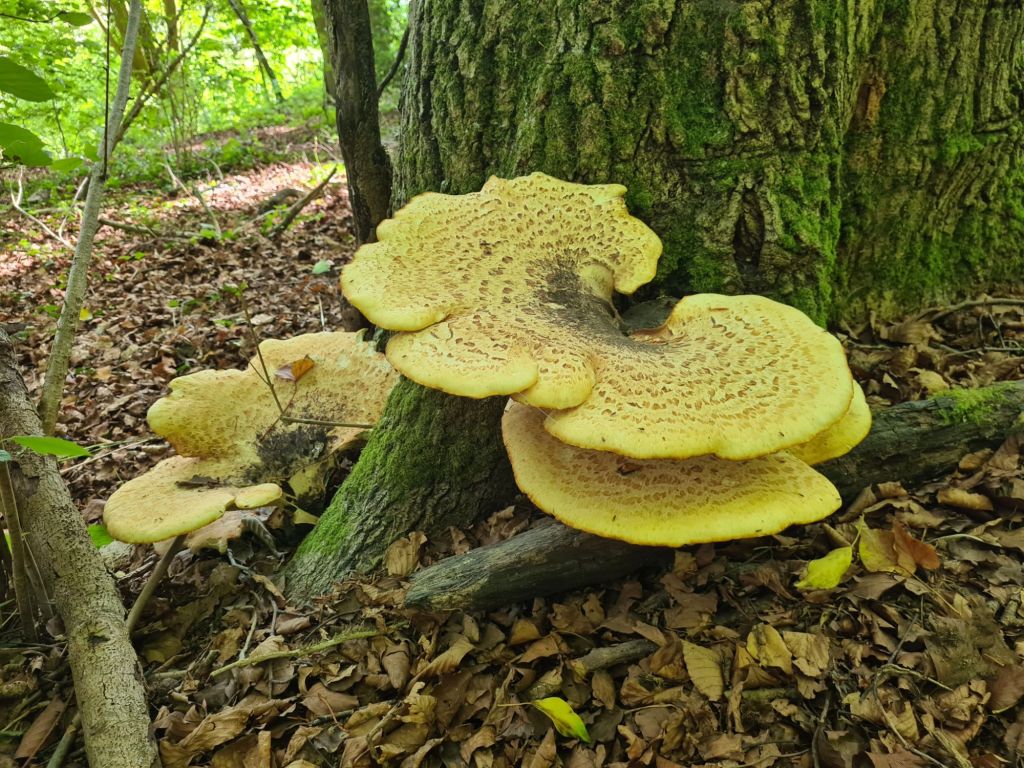
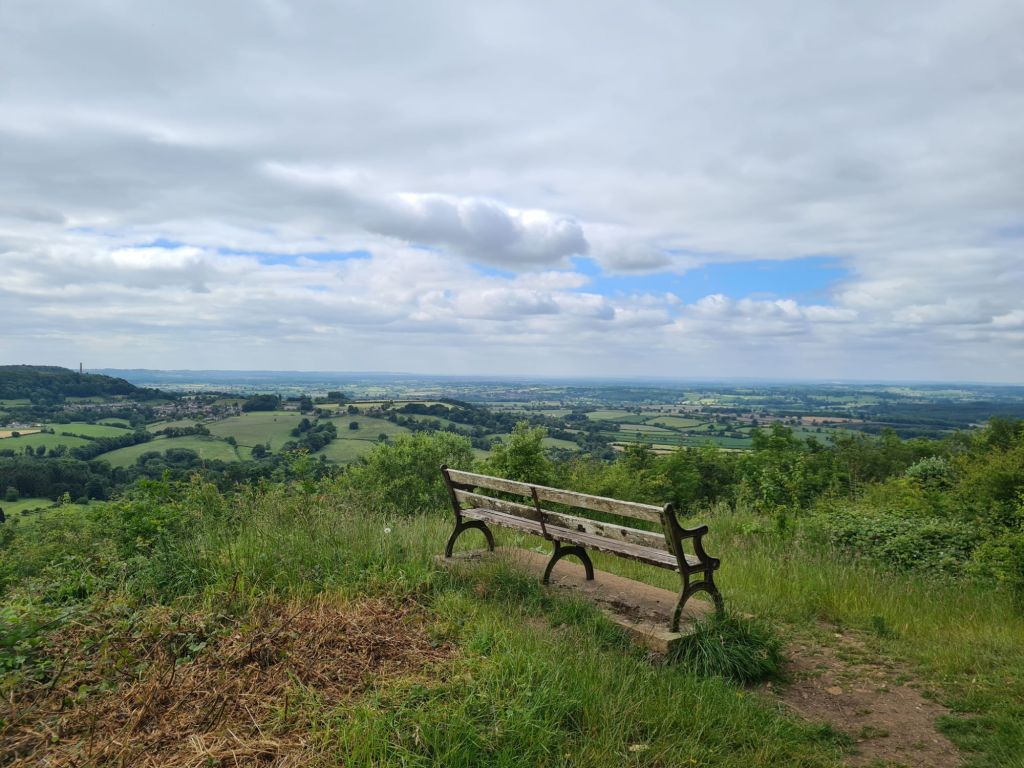
It was Sunday and the hill was busy with golfers, horse riders, off road cyclists, dog walkers, families and trail walkers, though most of the latter simply take the short cut across the golf course, missing out two miles, an hour of walking and the views.
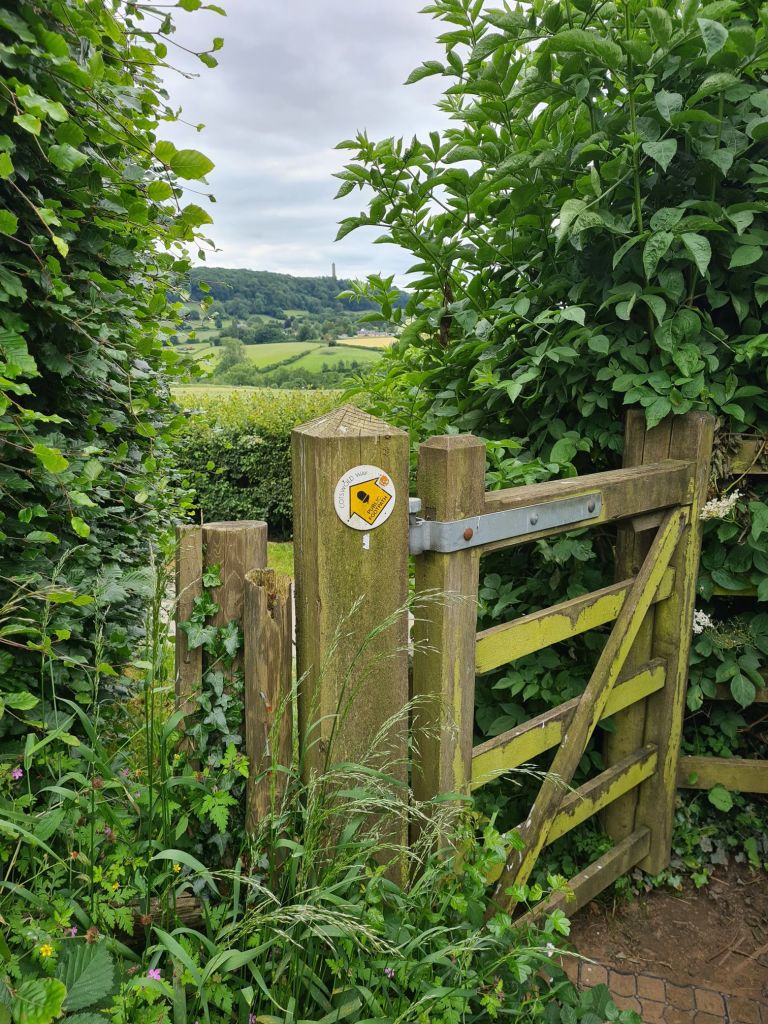

Back on the escarpment the path slowly dropped then climbed to North Nibley where, wonder of wonders, we arrived at a pub, just when it was opening. Never look a gift horse in the mouth and all that. We stopped in at the Black Horse for an excellent pint of Wye Valley HPA 4% and not so good Bath Ales Gem 4.1%.
It was near here, at Nibley Green, that the last battle between private armies on English soil took place in 1470. It was basically a bloody punch up between hot-headed neighbours. Lord Lisle challenged Lord Berkeley to do battle over the ownership of Berkeley Castle. About 2000 soldiers engaged. The twenty year old Lord Lisle was shot in the face then stabbed to death by a dagger. His army ran for their lives, and around 150 men on both sides died. The skirmish solved little as dispute and litigation continued for hundreds of years.

Full of beer, it was then a slow plod up the sunken lane to a highlight of this section, the Tyndale Monument.
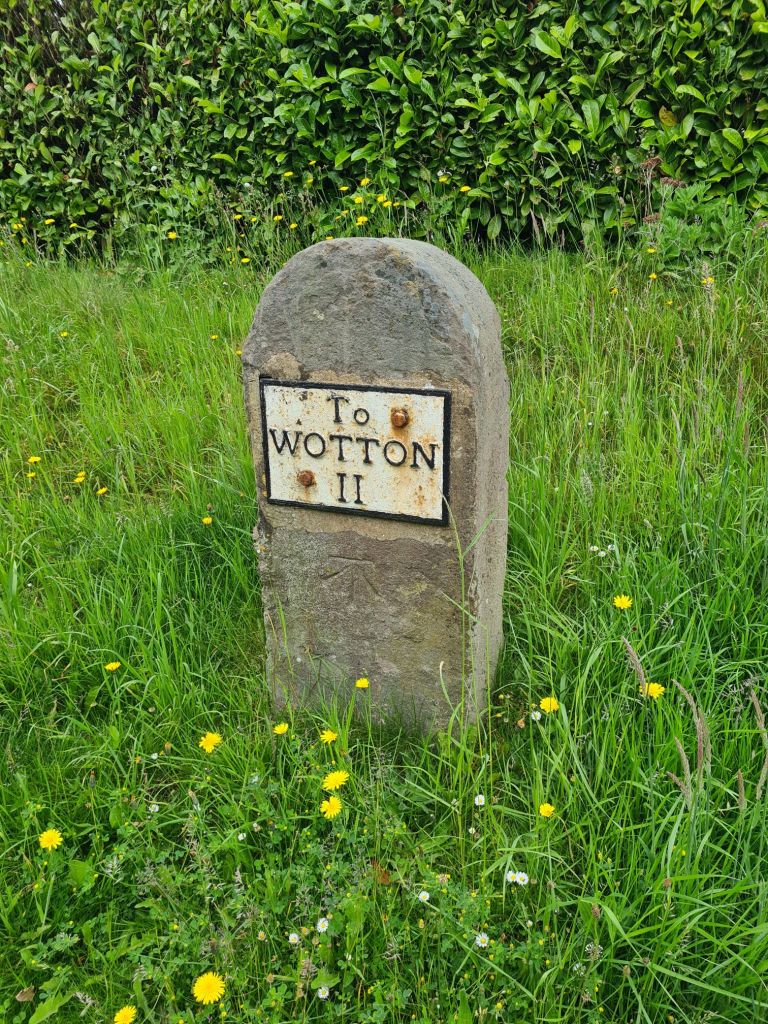


Tyndale Monument, on the wonderfully named Nibley Knoll, was built in 1866 in memory of William Tyndale who translated the Bible into English. It was built here as nearby North Nibley was reputed to be his birthplace, but that was a different Tyndale! Never let the facts get in the way of a decent story. The man himself died a horrible death- charged with heresy and found guilty. He was put to death by strangulation, and his body burnt at the stake in Vilvorde in 1536. Two years later Henry VIII decreed that every church in England should have an English Bible. Two translations were used, both based on Tyndales’ work.

As to the monument itself, it was open for anyone to climb to the viewing platform. My guide book informed me there are more than 200 steps, there aren’t. There are 121. I know as I counted them. Whatever, it is a great view. Mrs TPOTC showed good sense and she and her protesting knees waited at the bottom.


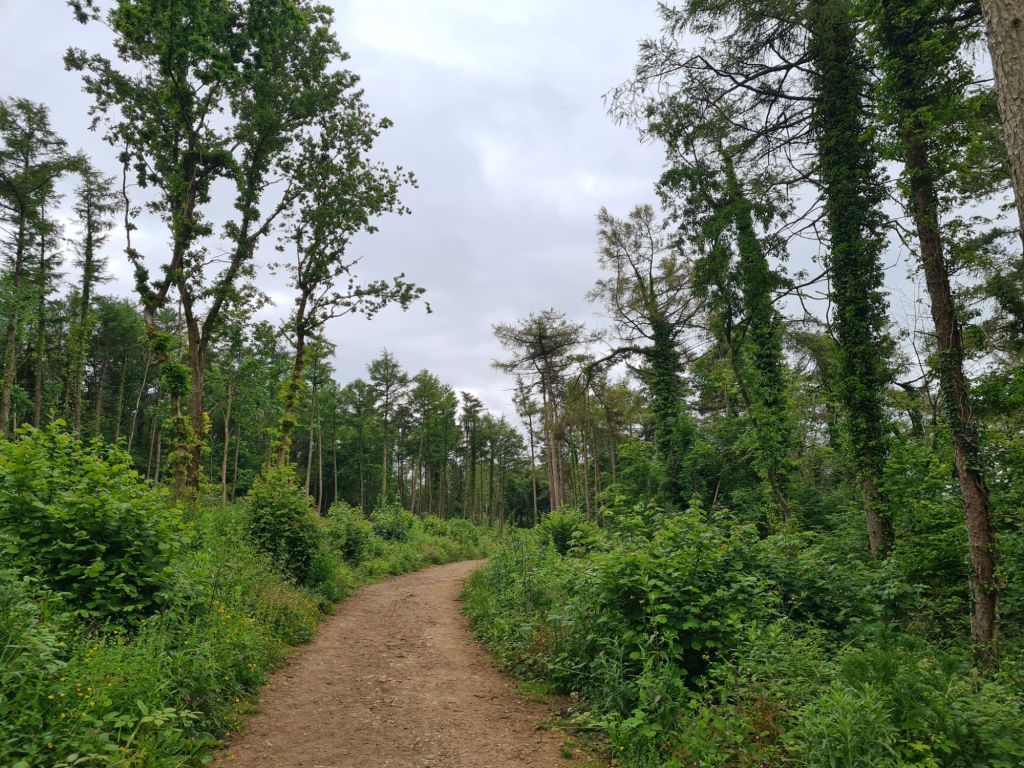
I had been hoping to see another iron age hill fort along this stretch but Brackenbury Ditches is almost completely overgrown by trees and it remained unseen.
“Welcome to Wotton “
From there, it was just a couple of miles to the end of our day. The oddly symmetrical Wotton-under-Edge, situated beneath the lip of the Cotswold escarpment. It immediately struck us as a friendly place, Mrs TPOTC being greeted by a random stranger as she walked down into town. We had arrived at two in the afternoon, too early to check in, so stopped in to The Royal Oak for a quick’un en route.

Tonight’s accommodation is the Swan Hotel, originally a seventeenth century coaching inn. Frustratingly, we had been forced to book a table far earlier than we would have preferred due to their meal serving times and made our order at 18.30. But, it was a Sunday and even after just a seven mile hike I decided I had earned a Sunday Roast.
We were both hungry so adjudged our meals ‘OK’. But every single item that came out of the kitchen was over-cooked and on stone cold plates. As my old school teacher used to regularly write on my reports, “must try harder”!

- Cotswold Way- National Trail
- Cotswold Way: Chipping Campden to Stanton
- Cotswold Way: Stanton to Winchcombe
- Cotswold Way: Winchcombe to Dowdeswell
- Cotswold Way: Dowdeswell to Birdlip
- Cotswold Way: Birdlip to Painswick
- Cotswold Way: Painswick to King’s Stanley
- Cotswold Way: King’s Stanley to Dursley
- Cotswold Way: Wotton-under-Edge to Old Sodbury
- Cotswold Way: Old Sodbury to Cold Ashton (Pennsylvania)
- Cotswold Way: Cold Ashton to Bath

thank you for the post , the more that I see through your eyes I realize what a very old and very beautiful country that you live in .
The ale sounded wonderful … I like a good English ale , I had occasion to try some in 1979 when my sqadron stopped for the night and were “entertained” by our allies .
LikeLike
Beer is an acquired taste, but worth persevering with! Some much better than others. Every brewer seems to be moving over to the New England Pale Ale style, with citra, amarillo and mosaic hops for the fruitier taste. Nothing wrong with that, but long may the brown bitter style remain
LikeLiked by 1 person